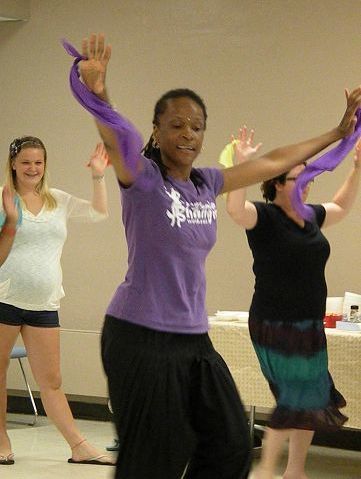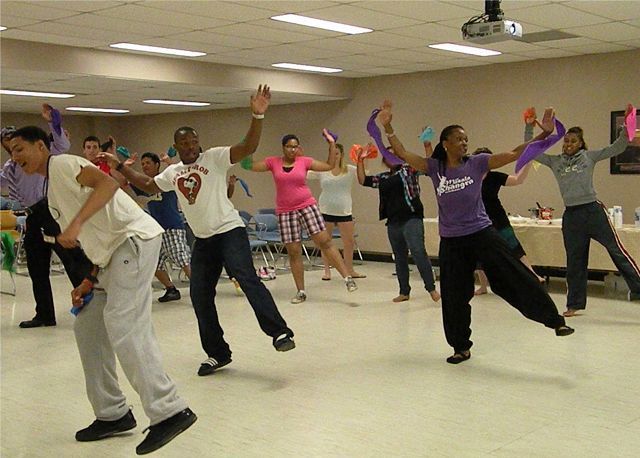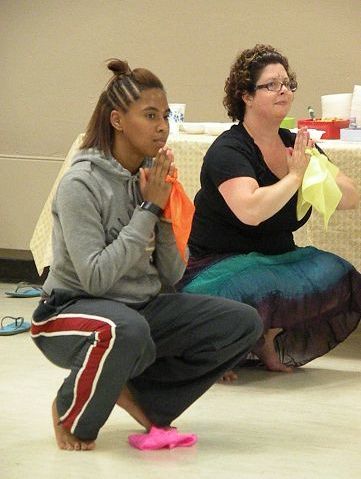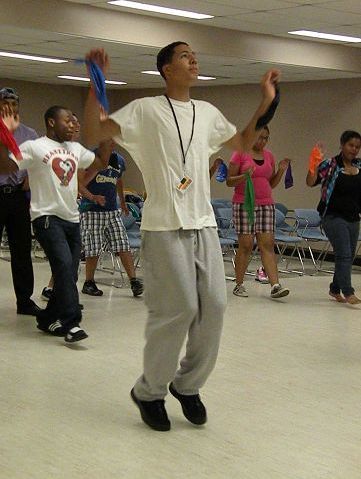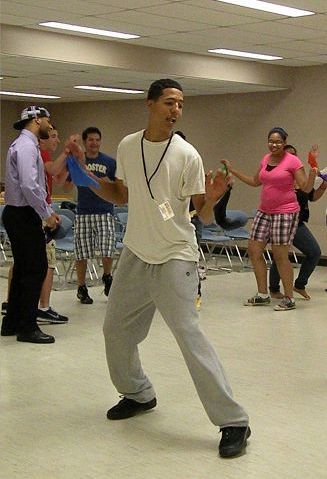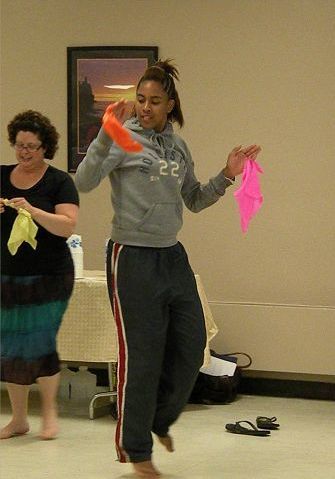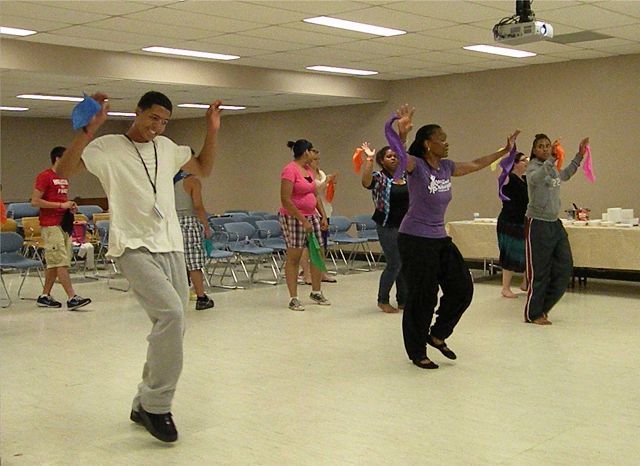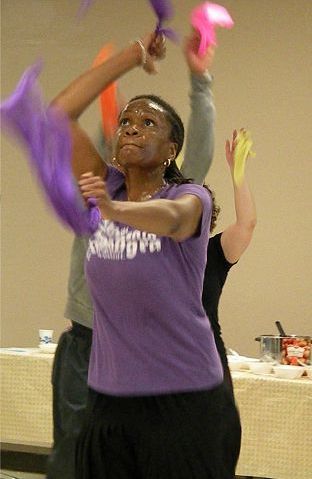East meets west for Upward Bound students
For the Upward Bound students in Denise Rotavera-Krains World Music and Identity class, learning about the culture of India meant more than simply reading text books and memorizing facts.
For the past several weeks, Rotavera-Krains students have studied the culture of other nations, including India, through the lens of that countrys unique music, dance and musical instruments.
The culminating event of their experience came in the form of participating in a workout craze that has swept America that blends traditional Indian folk dancing with more modern influences known as The Masala Bhangra Workout.
The July 14 class was lead by guest instructor Lisa Wheeler-Cooper, who according to Rotavera-Krain is one of the few certified instructors of The Masala Bhangra Workout in Ohio. A fitness professional by trade, Wheeler-Cooper presents a wide variety of workshops and dance classes, including the Masala Bhangra technique, throughout Northeast Ohio.
Rotavera-Krain describes Masala Bhangra as an exercise dance routine that modernizes the high-energy folk dance of Bhangra by blending traditional Bhangra dance steps and the exhilaration of Bollywood moves.
Wheeler-Cooper explained to the students that the Bhangra style of dance originated as a folk dance in the Punjab region of northern India near its border with Pakistan.
According to Wheeler-Cooper, the dance was originally performed by men accompanied by a two-headed drum called a dhol, to celebrate the wheat harvest and rituals such as weddings.
Once Punjabis began migrating to other areas of the world - most notably Great Britain - in the early 1950s, Bhangra spread and evolved into a global popular dance, said Rotavera-Krain.
Today, both men and women dance to exciting fusions between Bhangra and reggae, soul, rap, and hip-hop, reflecting cultural interactions between the Punjabis and other immigrant cultures, Rotavera-Krain added.
After providing the students with information on the history of Bhangra, Wheeler-Cooper invited the ladies in the class to place a traditional piece of Indian jewelry known as a bhindi on their foreheads. Ladies and gentlemen alike wrapped colorful silk scarves around their little fingers and prepared to take on the challenge of the half-hour long, high energy workout that blended east and west.
For Wheeler-Cooper the workout routine is far more than simply a way to shed a few pounds and get in shape.
Its a way to introduce people to the culture of India.
Indian culture has touched all of us in many ways, said Wheeler-Cooper.
Indian culture has impacted the world through dance, through food, through fashion, Wheeler-Cooper told the students adding, you may see some Indian inspired clothes when you go school shopping in the fall.
Rotavera-Krains World Music and Identity class was one of a series of electives offered to the 40 students from Wooster, Orrville, Canton McKinley and Timken high schools who are taking part in Upward Bounds six week on-campus summer program.
According to Rotavera-Krain the local Upward Bound program, which is housed at the Ohio State ATI campus and funded by the U.S. Department of Education, helps income eligible students prepare for college by overcoming class, social, academic, and cultural barriers to higher education by offering academic advising, tutoring, college information and visits, career exploration, personal and social development workshops, academic enrichment and assistance with financial aid searches.
For more information on The Masala Bhangra Workout visit http://www.masaladance.com.
More information on ATIs local Upward Bound program can be found at http://www.atiub.osu.edu

